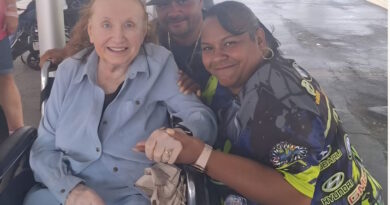Artistic Father of the Cuban Musicians
Hubert De Blanck: Artistic Father of the Cuban Musicians
by Ana María Ruimonte, www.ruimonte.us
While I was in Havana in June, the one and only maestro Huberal Herrera invited me to attend a beautiful concert titled “Spanish Cuban Romantic Music from the 19th Century” at the “Palacio de los Matrimonios” (Marriage Palace in English), on Sunday, June 24th at 11 am.
 The pianists Lisa María Blanco and Yanner Rascón played delightful compositions by Cecilia Arizti Sobrino and Nicolás Ruíz Espadero, and the actress Natasha Díaz read poems by Gertrudis Gómez de Avellaneda and José Martí. But what excited me most was what followed: The performance by the maestro Huberal Herrera who played The Beautiful Cubana by José White and also five great compositions by Hubert de Blanck: “Study in e minor”, “Over the tomb of Ma-ceo”, “Viennese Waltz”, “Toccata in A minor” and “Variations on the Hymn of Bayamés”.
The pianists Lisa María Blanco and Yanner Rascón played delightful compositions by Cecilia Arizti Sobrino and Nicolás Ruíz Espadero, and the actress Natasha Díaz read poems by Gertrudis Gómez de Avellaneda and José Martí. But what excited me most was what followed: The performance by the maestro Huberal Herrera who played The Beautiful Cubana by José White and also five great compositions by Hubert de Blanck: “Study in e minor”, “Over the tomb of Ma-ceo”, “Viennese Waltz”, “Toccata in A minor” and “Variations on the Hymn of Bayamés”.
These pieces were characterized by a progression of slow and fast  rhythms; ascending and descending arpeggios across the entire eight octaves of the piano; deeply profound, pedal tones reflecting the solemn sections; sweet waltz rhythms; influences of Bach and Wagner, contrapuntal fugues with variations and cannon; agile strumming, staccato, trills and theatrical expressivity. The pieces demonstrated maestro Herrera’s range of expression and facility in this gorgeous collection of pieces by the composer.
rhythms; ascending and descending arpeggios across the entire eight octaves of the piano; deeply profound, pedal tones reflecting the solemn sections; sweet waltz rhythms; influences of Bach and Wagner, contrapuntal fugues with variations and cannon; agile strumming, staccato, trills and theatrical expressivity. The pieces demonstrated maestro Herrera’s range of expression and facility in this gorgeous collection of pieces by the composer.
The story of Hubert de Blank exhilarates me. When he was young, Belgium’s King Leopold the Second awarded de Blanck a grant to study music wherever he decided. Then de Blank traveled to Colonia in Germany. There he met a Brazilian violinist, Eugene -Maurice Dengremont and they create a duo together. They toured throughout Europe and in the Americas they performed in Rio de Janeiro, Buenos Aires and New York. Hubert de Blanck gained a position as professor of piano at the College of Music in New York; where he met the Cuban Ana María García Menocal and they married there in 1881. They went to Havana for Christmas in 1882. Just one year later, the couple moved to live in Havana. They had 5 sons, the oldest named Guillermo. When Ana María died, de Blanck married Pilar Martín and they had 3 more children. Hubert de Blanck incorporated the music and rhythms of Cuban into his musical life. He obtained Cuban citizenship and in 1885 founded Cuba’s first Conservatory of Music, which to this day bears his name and continues to train the best young Cuban musicians. Eventually, de Blanck was forced into exile as a result of his politics, particularly his pro-independence activism. He composed many piano pieces, and also the opera “Patria” (Homeland). He is buried in the Colon cemetery in Havana.
Maestro Huberal Herrera is the most recognized interpreter of the  music of Hubert de Blanck. Indeed Maestro Herrera owns an extensive collection of his compositions, some otherwise unavailable, given to him by de Blanck’s son Guillermo Menocal, who was Herrera’s teacher.
music of Hubert de Blanck. Indeed Maestro Herrera owns an extensive collection of his compositions, some otherwise unavailable, given to him by de Blanck’s son Guillermo Menocal, who was Herrera’s teacher.
Such an exceptional composer and magnificent interpreter!
Ana María Díaz was born in Madrid and obtained her Master of Arts in voice with the specialty of Opera at the Escuela Superior de Canto in Madrid. Presently, she lives in Philadelphia. Opera singer and writer of reviews of opera and other artistic activities, she is President of Owlsong Productions, Inc. Ana María Díaz belongs to the duo Soprano Meets Contrabass with her husband Alan Lewine, performing original arrangements of arias and songs for soprano and jazz contrabass with flamenco influences in the recital “800 years of music in less than 2 hours”. Ana María Díaz is a member of Opera America in New York, UNIMA-USA, Early Music America and Women in the Music.
Ana María Díaz has written and produced a bilingual musical Baroque theatrical performance titled “Burn, Heart, Burn” as a commemoration of the artists from 17th Century Spain and America with puppets using elaborate period costumes, songs and brief stories. The songs are recorded in her CD “Arded, Corazón, Arded”. Ana María been collaborating with “CNY Latino” Newspaper with her column titled “Burn, Heart, Burn” since the beginning of 2015.
